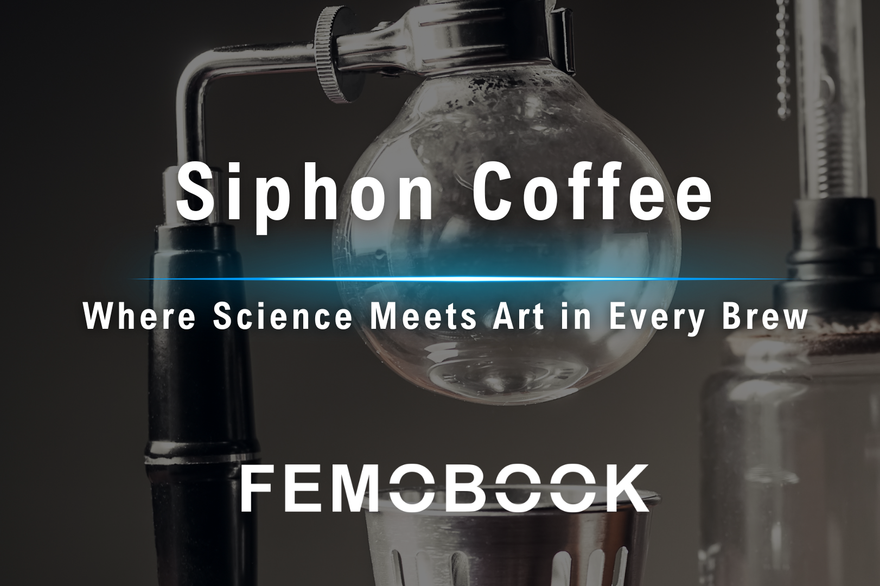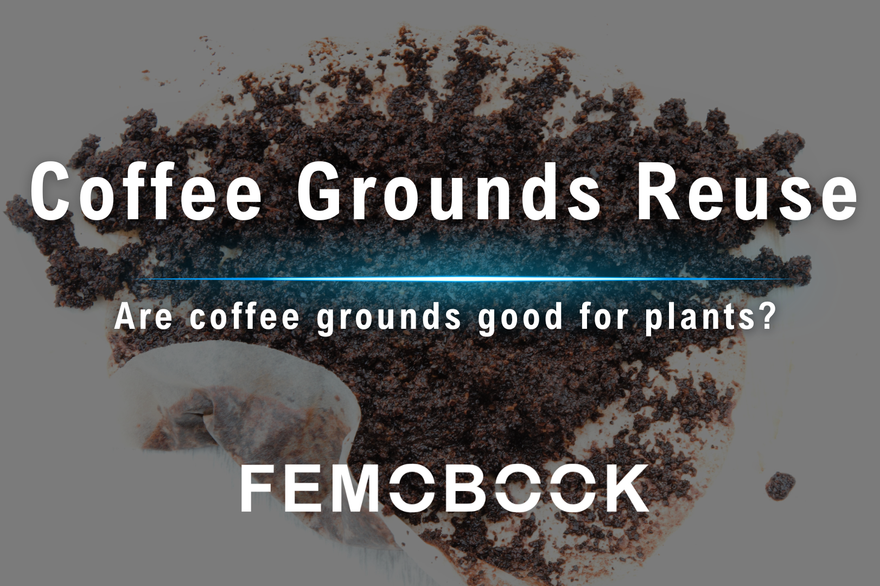
Immersion brewing is one of the simplest and most versatile ways to make coffee. With different brewers, it can produce a wide range of flavors—from rich and heavy-bodied cups to clean and aromatic brews.
Whether you’re just getting started or already familiar with brewing techniques, immersion methods offer a simple and consistent way to enjoy great coffee anywhere.
In this guide, we’ll explore what immersion brewing is, how it compares to pour-over coffee, the tools you can use, and the steps to master each style.
What Is Immersion Coffee Brewing?
Immersion brewing is a full-immersion extraction method where coffee grounds steep completely in water before being filtered and served.
Because the water stays in contact with the grounds for a longer time, it promotes deeper extraction of flavor compounds and aromatic oils. When using a metal filter instead of paper, more of these natural oils remain in the cup, resulting in a richer, heavier body.
Types of Immersion Brewers and How They Work
There are many ways to brew coffee using the immersion method. By combining immersion extraction with different brewers, you can create a wide range of flavor profiles and textures—each with its own distinct character.
French Press
The French Press is the most classic immersion brewer. It consists of a glass carafe with a metal mesh plunger that separates the grounds from the brewed coffee.
To make French Press coffee, add ground coffee to the carafe, pour in hot water, and let it steep for about 3–5 minutes, then slowly press down the plunger. The grounds settle at the bottom, and the brewed coffee is poured from the top for a full-bodied, aromatic cup.
AeroPress
The AeroPress is a compact, portable brewer that looks a bit like a syringe. Ground coffee and water steep together inside the chamber before gentle pressure is applied to push the brew through a paper filter.
Loved by coffee enthusiasts worldwide, the AeroPress is known for its flexibility—it combines immersion and gentle pressure, making it easy to experiment with different recipes and brew styles.

Clever Dripper
The Clever Dripper bridges immersion and pour-over brewing. It looks like a classic filter dripper but features a valve at the bottom that holds water in the chamber while the coffee steeps.
Once extraction is complete, placing the dripper on a mug or server opens the valve automatically, allowing the brewed coffee to flow down.

Syphon Coffee Brewer
The siphon coffee brewer, also known as a vacuum coffee maker, uses vapor pressure and vacuum force to move water between two chambers.
As the water in the lower chamber heats up, vapor pressure pushes it upward to mix with the coffee grounds in the upper chamber. When the heat source is removed, the lower chamber cools and creates a vacuum, drawing the brewed coffee back down.
The entire process is both scientific and elegant—an experience that combines visual theater with a clean, aromatic cup.

Turkish Coffee
Turkish coffee is one of the oldest brewing traditions in the world. Finely ground coffee is mixed with water in a small metal pot called a cezve, then slowly heated over low flame until it’s near boiling.
In some traditional methods, the pot is placed in hot sand for even heat distribution—a technique that adds both precision and visual charm.
The coffee is poured directly into the cup without filtering. The grounds settle at the bottom, while the upper layer is sipped carefully for its rich, intense flavor and thick, syrupy texture.

Cold Brew Coffee
Cold brew coffee is made by steeping coarse-ground beans in cold water for an extended period—usually 8 to 12 hours or longer. Because extraction happens more slowly at a lower temperature, the result is a smooth, mellow brew with gentle acidity and a refreshing finish.
Cupping (Coffee Tasting)
Cupping is the standard method used by professionals to evaluate coffee quality and roast development. Hot water is poured directly over ground coffee in open cups, allowing the grounds to steep without filtration. After a few minutes, the crust that forms on top is gently broken and skimmed away, and the liquid beneath is tasted with a spoon to assess the coffee’s aroma, flavor, and balance.
Immersion vs Pour-Over Coffee: How They Differ in Extraction and Flavor
Immersion and pour-over are two of the most common manual brewing methods. The key difference lies in how water interacts with the coffee grounds.
In immersion brewing, the grounds stay fully submerged for a set period, allowing thorough extraction.
Pour-over, on the other hand, relies on a steady flow of water that passes quickly through the coffee bed, resulting in shorter contact time. Because pour-over usually uses a paper filter, it removes some of the coffee’s natural oils.
When it comes to flavor and mouthfeel:
-
Immersion coffee tends to be rich, full-bodied, and smooth.
-
Pour-over coffee delivers a cleaner taste with brighter acidity and more distinct flavor layers.
Here’s how immersion and pour-over methods differ in technique, extraction, and flavor profile:
| Immersion Brewing | Pour-Over Brewing | |
| Water contact time | Longer; coffee grounds stay fully immersed throughout the brew. | Shorter; water flows continuously through the coffee bed. |
| Extraction control | Time-based; longer contact can enhance flavor but risks over-extraction. | Flow and agitation can be adjusted precisely for balanced extraction. |
| Flavor and texture | Full-bodied, rich, and oily, with heavier mouthfeel. | Clean, crisp, and layered, highlighting the bean’s original characteristics. |
| Ease of use | Simple and consistent, requires minimal technique. | More variables to manage; skill and experience lead to finer results. |
Pros and Cons of Immersion Brewing
Advantages
Simple equipment: You only need a single vessel to brew immersion coffee—no complicated setup required.
Requires minimal technique: Just choose the right grind size, water temperature, and steeping time, then pour in hot water and let it rest. No need for pour-over techniques or blooming steps.
Beginner-friendly: The method is forgiving and produces consistent results even with minimal experience.
Portable and versatile: Because the tools are lightweight and simple, you can brew great coffee anywhere—from your kitchen to the outdoors.
Disadvantages
More cleaning required: Oil residues can build up inside the brewer. For example, the metal mesh filter of a French press can be difficult to clean thoroughly.
Less clarity: While immersion coffee is rich and full-bodied, it usually lacks the bright acidity and distinct flavor layers that pour-over brings. Still, this depends on personal preference.
Essential Equipment for Immersion Brewing
To make great immersion coffee, you only need a few simple tools: a grinder, a brewing vessel, a timer, a digital scale, and a cup or server.
Grinder
Grinding your beans to the right size is the first step in good brewing. Different immersion brewers—such as the French press or AeroPress—require slightly different grind sizes. To preserve flavor clarity, clean out residual grounds after each use.
Brewing Vessel
Choose a brewer that fits your preferred style, such as a French press, Clever Dripper, or cold brew bottle. Each design may call for different grind sizes or steeping times.
Timer
Use a timer to track your steeping time. If it’s too short, the flavor may be weak; too long, and the coffee can become over-extracted. Adjust based on your grind size, brewing method, and taste preference.
Digital Scale
A digital scale helps you control the coffee-to-water ratio accurately—especially useful if you want to replicate or fine-tune your results.
Cup or Server
A simple mug or glass server works perfectly for serving immersion coffee.
How to Brew Immersion Coffee + Recommended Parameters
Brewing immersion coffee is straightforward. Here’s a simple step-by-step guide followed by general brew parameters you can use as a starting point.
Steps
-
Add the grounds: Place freshly ground coffee into your brewing vessel.
-
Add water: Pour in hot or cold water depending on your brewing method. Gently stir to ensure even saturation.
-
Steep: Let the coffee steep for the recommended time so the water can fully extract the flavors.
• French Press: 3–5 minutes
• AeroPress: 1–3 minutes
• Cold Brew: 8–24 hours (refrigerated) -
Filter and serve: Separate the grounds from the liquid. For methods like cupping or Turkish coffee, this step is skipped.
Recommended Brew Parameters
There’s no single “correct” recipe—use these guidelines as a reference and adjust to taste.
Grind Size
-
French Press: Coarse (similar to kosher salt)
-
AeroPress: Medium to medium-fine (depending on the recipe)
-
Siphon: Medium to medium-fine (similar to table sugar)
-
Turkish Coffee: Extra fine (almost like flour)
-
Cold Brew: Coarse (similar to sea salt)
Coffee-to-Water Ratio
-
French Press: 1:15–1:16
-
AeroPress: 1:12–1:16
-
Siphon: 1:12–1:15
-
Turkish Coffee: 1:8–1:12
-
Cold Brew: Concentrate 1:5–1:8; Ready-to-drink 1:10–1:15
Water Temperature
-
Light Roast: 90–96°C (194–205°F)
-
Dark Roast: 86–92°C (187–198°F)
Is Immersion Brewing Right for You?
Immersion brewing suits a wide range of coffee drinkers—from complete beginners to seasoned enthusiasts looking for an easy, reliable brew method.
Beginners
Immersion brewing is simple and consistent. There’s no need to master pouring techniques or worry about flow rate, making it a forgiving way to start brewing coffee at home.
Those Who Love a Rich, Full-Bodied Cup
Because immersion coffee allows longer contact between water and grounds, it produces a heavier texture and more intense flavor—perfect for those who prefer bold, satisfying coffee.
Outdoor or Travel Brewers
Immersion brewers are lightweight and portable, ideal for brewing fresh coffee while camping, traveling, or enjoying the outdoors.
Can You Reuse Coffee Grounds for Immersion Brewing?
Although immersion brewing might seem similar to steeping tea, it’s not recommended to brew the same coffee grounds twice. Most of the desirable flavor compounds are extracted during the first brew. A second steeping tends to pull out bitter and unpleasant notes, resulting in an unbalanced cup.
The Importance of Freshly Ground Coffee
Freshly ground coffee is the foundation of great immersion brewing. The Femobook Electric Grinder delivers fast, precise, and consistent grinding performance for every brew method.
Built with conical burrs and over 300 micro-adjustable grind settings, depending on the model, it lets you fine-tune your grind size to match different immersion brewers—whether you’re using a French press, AeroPress, or cold brew bottle.
Its straight-through design minimizes retention, while the magnetic quick-release system makes cleaning effortless and helps preserve flavor integrity.
Femobook also offers rechargeable models—perfect for brewing fresh coffee anywhere, from home to the outdoors.








